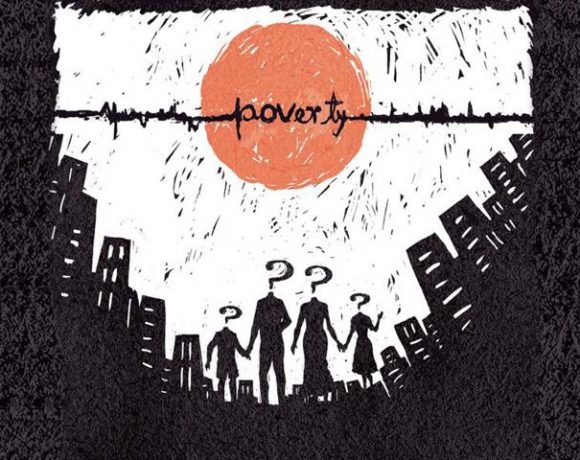

Combating Cancer through wider public outreach & use of new age awareness is key – Dr. Sandeep Chatrath
Community Outreach Strategy is Key for Cancer Prevention
The organization works to improve the health and well-being of the people and communities. Our present work focuses on strategies to make it easier for people to eat well, be tobacco- free, be physically active, and obtain preventive care.
Through these programs, our staffs works collaboratively with school districts, businesses, communities, hospitals, and healthcare provider organizations to support healthy lifestyles for our patients and community members. Specific strategies focus on policy, systems, and environmental changes that reduce risks for Cancer& chronic disease and improve quality of life for both children and adults. Hospital is committed to the surrounding community and participates in a variety of programs designed to increase awareness on Cancer.
Our community outreach programs are effective vehicles for bringing health education, screening and other health care services directly to those in need. Our efforts focus on increasing health literacy especially on prevention from cancer, providing better access to quality health care facilities and providers, and supporting communities in need by funding vital health programs.
Improving Community Health
Non-medical, non-emergent needs are often intricately tied to personal health and well-being. Hospital is working to address basic, social and personal needs as a way to improve their communities’ health. They are working not just to mend bodies, but also to make people and communities healthier.
Various Community Outreach strategies for Cancer Prevention are :
- Understanding mortality and morbidity due to cancer: As per WHO 33% women and 25% men are likely to get cancer in their life time. Incidence of cancer is increasing with every passing day. Battle against cancer cannot be won by doctors and scientist alone. The entire community has to be involved. It is possible to prevent 40-50 % cancers by adopting healthy life styles. By self examination, it is possible to detect 10-20 % of cancer and by annual check up for cancer, it is possible to detect 50-60 % of cancers. Cancer is curable, if detected early and treated promptly at good cancer hospitals.
- Understanding Common cancers in India:Men: Lung, Larynx, Tongue, Mouth Oesophagus, Gall Bladder, Prostate, Non Hodgkin Lymphoma (NHL) Women: Breast, Cervix, Ovary, gall Bladder, Oesophagus, lung, Thyroid, Non Hodgkin Lymphoma (NHL), Brain
- Understanding Warning Sign of Cancer: Change in bowel or bladder habit, Asore / wound that does not heal, Unusual bleeding or discharge from any part of the body, Thickening / lump in breast or elsewhere, Indigestion or difficulty in swallowing, Obvious change in size of a wart or mole, Nagging cough or hoarseness
- Spreading awareness about Causes of Cancer: Tobacco and tobacco products initiate cancer, Alcohol promotes cancers, High fat foods and overweight, Infections e.g. HIV, Hepatitis B and C, Papilloma Virus etc., Genetic, Unknown.
- Steps for Prevention of Cancer: Stop Smoking (active and passive) and alcohol to prevent lung, head and neck cancers, Avoid high fat and rich foods. Eat Whole grains, fruits and fresh vegetables to prevent cancers of breast, prostate and colon, Exercise to stay healthy, Avoid exposure to household solvent cleaners, cleaning fluids and paint thinners, pesticides, fungicides and other chemicals to avoid lung cancer. Avoid multiple sex partners to avoid cancer cervix, Avoid direct sunlight in summers to avoid skin cancers
- Screening& Early Cancer detection :The earlier the cancer is detected / diagnosed the better are the chances of cure and complete recovery. It is important to realize that many cancers today are curable. Monthly Self Examination and Annual Cancer Screening are mandatory for early detection of cancer.
- Monthly Self Examination:Mouth: Change in colour of gums, lips, and Cheeks, White, Brown or Red patches, Ulcer, sore or Scab, thickening in any part of the mouth. Neck: Look for any lump, Swelling or any other abnormality. Breast: Complete self breast examination for any lump, discharge from the nipple, puckering of skin. Abdomen: Any Swelling, enlargement or hardness of abdomen. Testis: Any Swelling, enlargement or hardness. Limbs: Any Swelling / Lump etc.
- Annual Cancer Screening: Men above the age of 50 years and women above the age of 40 years must go for annual cancer screening test like the Pap Smears, mammograms, Prostate Specific Antigen (PSA) and Digital Rectal Examination (DRE) for early detection of Cancer.
- Diagnostic and Staging Investigations for Common Cancers: Breast Cancer: FNAC / Biopsy, Mammography, Ultrasound Whole Abdomen, X-Ray Chest etc. Head & Neck Cancer: Biopsy, Direct Laryngoscope, X-Ray Chest, CT Scan (Head & Neck) etc. OesophagusCancer: Oesophagoscopy, Biopsy, EUS, CT Scan / MRI etc. Lung cancer: Bronchoscopy, Biopsy, CT Chest & Upper Abdomen, Bone Scan, MRI Brain etc. Cancer of Cervix: Pap Smear, Biopsy, LFT / RFT, Chest X-Ray, CT / MRI (Abdomen), EUA Cystoscopy / Proctoscopy. Ovarian Cancer: CA125 Blood Test, Tumour Marker, Ultrasound, Biopsy, CT Scan / MRI, Upper and Lower G.I Scopy etc. Gall Bladder Cancer: Ultrasound / EUS, Biopsy, CT Scan / MRI etc. Prostate: Digital Rectal Examination (DRE), PSA, Biopsy, Bone Scan, Pelvic CT / MRI etc.
- How to increase chances of cancer cure: Early detection by FNAC / Biopsy, Staging work up to find out the stage of the disease, Tumour Board evaluation , Treatment of cancer at dedicated cancer centres especially NABH Accredited Cancer Hospitals, Faith in Self, God and the treating team, Positive attitude and the will to fight
- Healthpromotion: Health awareness talk is being organized in various location of the Delhi NCR.
- Cancer detection Camp is organized in various locations like schools, colleges, NGOs etc.
The organization pay attention and makes a plan in terms of program expectations, cost to the hospitalfor providing the programs, potential market for the programs, best use of staff currently available within the hospital, recommended and required staff for efficient and effective health promotion programs, and a potential profit margin that might allow hospitals to prospectively absorb cost and develop a feasible, effective & efficient community outreach programs.
The Author is Dr. Sandeep Chatrath , CEO, Dharamshila Hospital And Research Centre


















